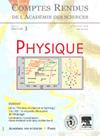北极支线/环I:北费米气泡的巨大外缘还是超新星吹来的附近的热气体腔?
IF 1.2
4区 物理与天体物理
Q3 ASTRONOMY & ASTROPHYSICS
引用次数: 2
摘要
银河系的无线电连续体、微波和伽马射线图像显示了一个明显的环状结构,几乎占据了银河系北半球的一半,称为环一。环一的内部在软X射线中闪闪发光,其东部底部是一个明亮的细长结构,称为北极刺(NPS)。经过40年的争论,关于回路I/NPS的两种相互矛盾的观点仍然得到了辩护:一方面,NPS是一个膨胀的热气体,包裹并延伸了已知被银河系中心吹出的北部费米气泡(FB),而回路I标志着冲击锋;另一方面,NPS是超新星吹出的热气体的附近空腔,I环是它的激波锋,它们巧合地位于FB的方向。对于观察太阳的人来说,这两种结构都可以产生相同的透视图,尽管前者的大小与银河系本身相当,后者的直径只有几百秒差距。所涉及的能量在3-4个数量级之间变化,解决方案具有各种重要的后果。我讨论了最近的结果,这些结果与回路I/NPS有关,被忽视或以两种相反的方式用作论据。它们涉及非常不同的航天器,从12公斤的Cubesat(HaloSat)到主要的太空天文台(HST、Gaia和Spektr RG)。我使用了尘埃的三维地图和大质量恒星目录。考虑到所有的限制,很明显,没有一个完全局部或完全遥远的场景与一些数据分析不矛盾或不太可能的巧合。我讨论了一个推测性的场景,部分灵感来自最近的BF和银河系气体模型,结合了近端和远端,似乎能够满足各种限制。然而,需要新的数据和模型来结束这场争论,我们仍然可以期待这场漫长故事的新一集。本文章由计算机程序翻译,如有差异,请以英文原文为准。
North Polar Spur/Loop I: gigantic outskirt of the Northern Fermi bubble or nearby hot gas cavity blown by supernovae?
Radio continuum, microwave and gamma-ray images of the Milky Way reveal a conspicuous, loop-like structure that fills almost half of the northern Galactic hemisphere, called Loop I. The interior of Loop I is shining in soft X-rays, and its eastern base is a bright, elongated structure dubbed the North Polar Spur (NPS). After 40 years of debates, two contradictory views of Loop I/NPS are still defended: on the one hand, the NPS is a volume of expanding hot gas that envelops and extends the northern Fermi Bubble (FB) known to be blown by the Galactic center, and Loop I marks the shock front; on the other hand, the NPS is a nearby cavity of hot gas blown by supernovae, Loop I is its shock front and they are coincidentally located in the direction of the FB. To an observer at the Sun, both structures can produce the same perspective view, although the former has a size comparable to the Milky Way itself, and the latter a diameter of a few hundreds parsecs. The energy involved varies by 3-4~orders of magnitude, and the solution has various important consequences. I discuss recent results which have a connection with Loop I/NPS, overlooked or used as arguments in the two opposite ways. They involve very different spacecraft, from a 12 Kg Cubesat (HaloSat) to major space-borne observatories (HST, Gaia, and Spektr-RG). I make use of 3D~maps of dust and a massive star catalog. Considering all constraints, it is clear that there is no entirely local or entirely distant scenario that is free from contradictions with some of the data analyses or from improbable coincidences. I discuss a speculative scenario, partially inspired by recent BF and Milky Way gas models, combining near and far aspects and seeming to be able to meet the various constraints. However, new data and models are needed to bring the controversy to a close and we can still expect new episodes of this long story.
求助全文
通过发布文献求助,成功后即可免费获取论文全文。
去求助
来源期刊

Comptes Rendus Physique
物理-天文与天体物理
CiteScore
2.80
自引率
0.00%
发文量
13
审稿时长
17.2 weeks
期刊介绍:
The Comptes Rendus - Physique are an open acess and peer-reviewed electronic scientific journal publishing original research article. It is one of seven journals published by the Académie des sciences.
Its objective is to enable researchers to quickly share their work with the international scientific community.
The Comptes Rendus - Physique also publish journal articles, thematic issues and articles on the history of the Académie des sciences and its current scientific activity.
From 2020 onwards, the journal''s policy is based on a diamond open access model: no fees are charged to authors to publish or to readers to access articles. Thus, articles are accessible immediately, free of charge and permanently after publication.
The Comptes Rendus - Physique (8 issues per year) cover all fields of physics and astrophysics and propose dossiers. Thanks to this formula, readers of physics and astrophysics will find, in each issue, the presentation of a subject in particularly rapid development. The authors are chosen from among the most active researchers in the field and each file is coordinated by a guest editor, ensuring that the most recent and significant results are taken into account. In order to preserve the historical purpose of the Comptes Rendus, these issues also leave room for the usual notes and clarifications. The articles are written mainly in English.
 求助内容:
求助内容: 应助结果提醒方式:
应助结果提醒方式:


